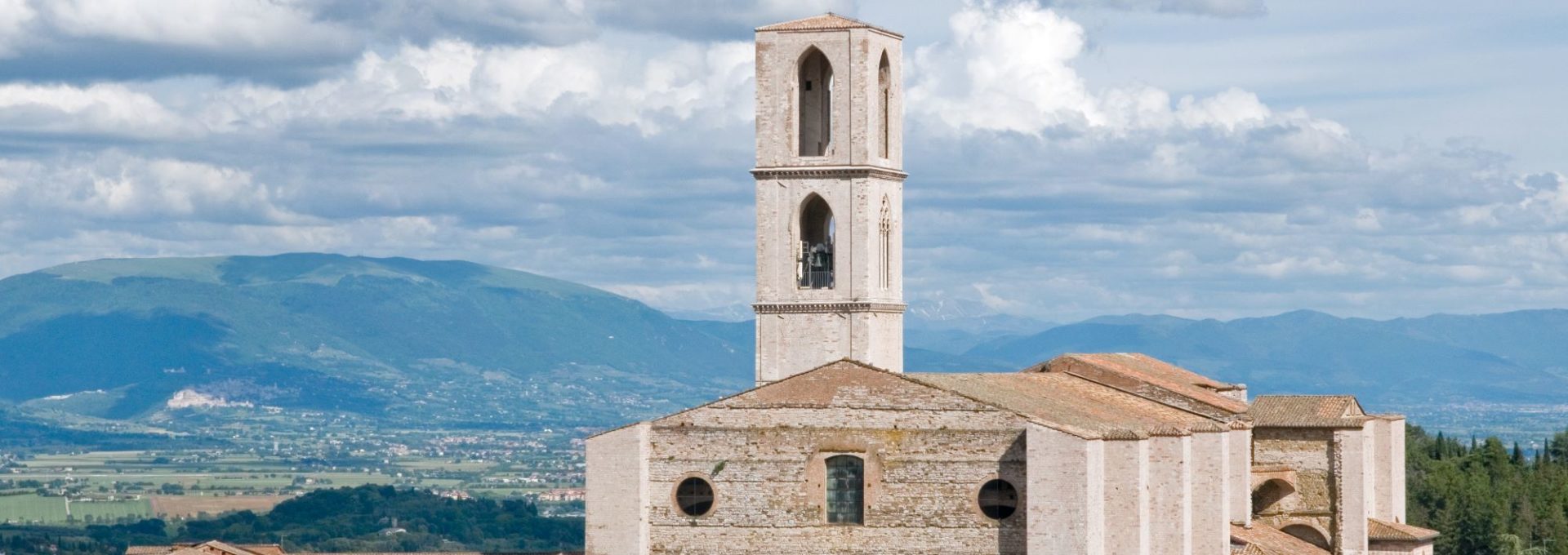Corso Cavour. despite being one of the most important avenues of the city centre, still maintains its medieval character. Halfway through it, you will immediately notice the huge facade of the “biggest religious building in Umbria”. The Basilica of San Domenico raises from the almost hidden Piazza Giordano Bruno, embellished by the puteal of a 1442 well.
Just like the rest of the city, the Basilica has a turbulent past. Its first version was built in 1304 in Gothic style next to a small Dominican church erected between 1230 and 1260, in a place that was already very famous back then being very close to the Church of S. Stefano del Castellare, an important meeting place of great political relevance. The building – due to serious structural damage – collapsed in 1614 and had to be almost entirely rebuilt.
A double staircase ends in the majestic facade leading to the main portal, built in 1596. The interior looks quite bare, especially if one considers that this church once boasted very rich decorations, almost all of which have been taken away during the Napoleonic domination or nationalised after the Unification of Italy. But all you need to do is raise your eyes and you will be welcomed by the magnificent painted windows that decorate the apse. The structure is 23 metres (75 feet) high and was painted in 1411 by Bartolomeo di Pietro and Mariotto di Nardo. Together with the Duomo of Milan, this is the biggest cathedral in Italy and one of the tallest in Europe.
The structure is divided in three naves in the classic Latin Cross shape, with the large transept and the majestic presbytery. On the right nave, in the second chapel named after S.Rosa da Lima, we can see canvases painted by Giuseppe Laudati, the second chapel is dedicated to Saint Pius V, while the fourth chapel (a structure dating back to the first construction) is dedicated to Madonna del Voto and was decorated by Agostino Duccio in 1459. On the left cross vault of the transept there are several remains of frescoes in the two chapels and – at the bottom – a statue of Pope Benedict XI who died in Perugia in 1304, by Lorenzo Maitani. The sarcophagus underneath contains the body of the deceased.
In the presbytery we ca see the high altar designed by Pietro Carattoli. Under the beautiful painted glass of the apse, sits the magnificent wooden choir realised by Crispolto da Bettona. On the altar, in the left transept, we see the Pentecost, a painting by Suor Plautilla Nelli of 1554. Above, the large golden organ by Sallustio da Lucignano and Luca Neri da Leonessa, built in 1660. On the left nave, towards the exit, the first chapel is dedicated to Saint Caterina and still has remains of the original frescoes that belonged to the first building, by Benedetto Bindo, 1415. Then, on the right in the fourth chapel, Madonna del Rosario tra i SS. Domenico e Caterina, by Giovanni Lanfranco, 1647, and the banner above the altar by Giannicola di Paolo, 1494, in the third chapel.



